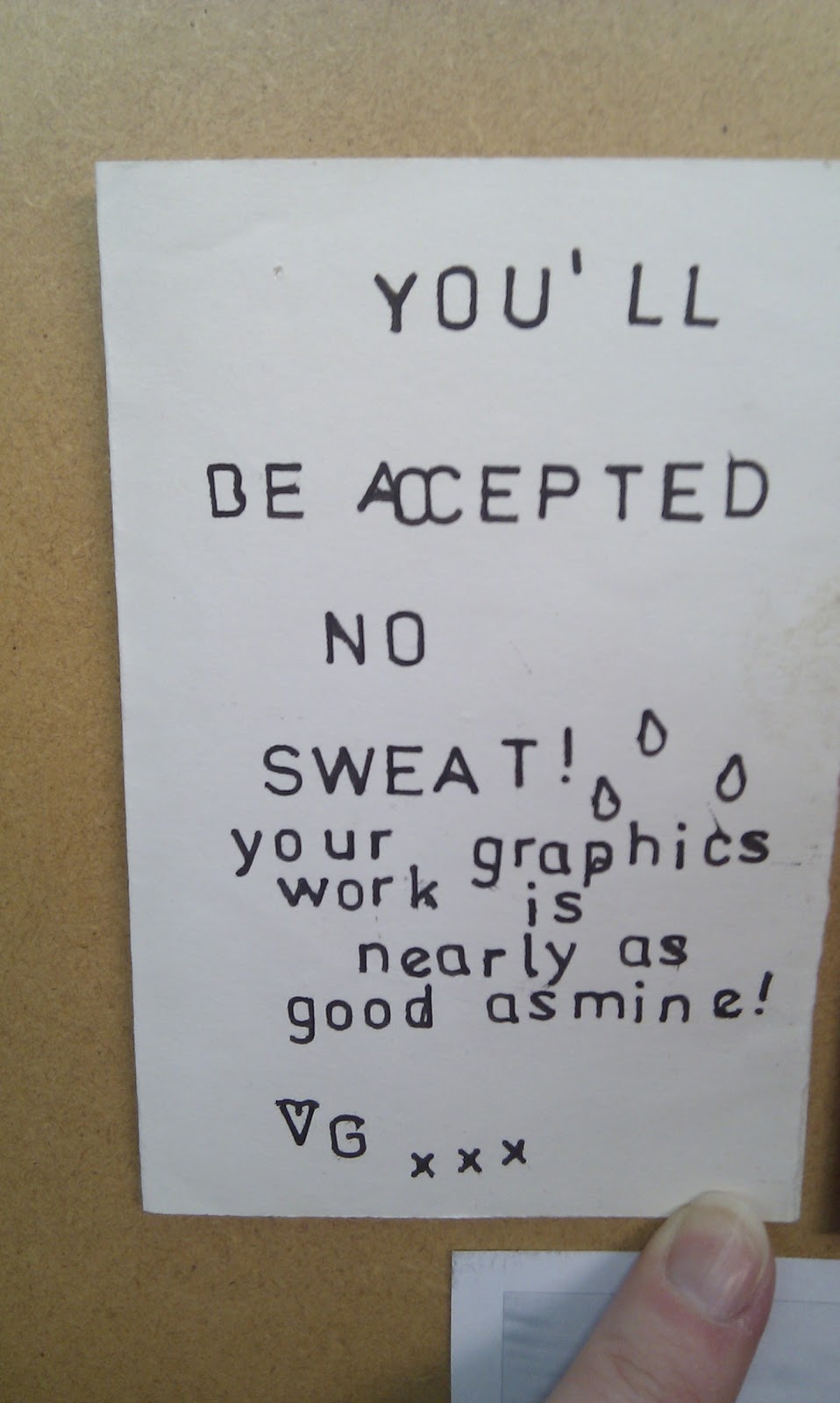There was once a time you could spot a designer at hundred paces (don't forget, we communicate visually) dressed in black, probably a polo-neck and goatee and that's just the girls. (In the BBC design team, my friend Penny and I used to fashion goatee beards from post-it notes, such was their innate power in the mid-90s to position you as a serious design contender.) Steve Jobs RIP has since ensured the black polo-neck and goatee are forever enshrined as the universal language for 'creative genius' and we normal humans dare not dilute that now. No, things have moved on, so how do you know you're talking to a good graphic designer? Here are some clues from an industry insider who's been there and done it. Starting at the top:
> hair: Hoxton Fins have slipped during the receding years and facial hair now looks like Goldilocks had a fight with Papa Bear and a tub of honey. Any designer worth their salt has a big, grizzly, fluffy beard, or statement hair. Hair is the designer's motto.
> asymmetry: ...of the fringe or hemlines. It must be intentional. Unintentional asymmetry betrays total lack control. Unintentional asymmetry means your deadlines are at risk.
> acute fashion sense: look for labels and t-shirt slogans - think twisty drainpipe jeans and Kooples stripes teamed with deck shoes. I'm not talking Primarni here - looks are everything and budget fashion indicates a designer's inability to manage their finances and direct them where it matters. Budget fashion suggests your budget is at risk.
> size of head: an ego the size of Texas is crucial.
> studio gimmicks: only hire a designer who has your best interests at heart, as displayed by the quality of gimmicks in their studio. The electric guitars/massive amps, carpet putting greens, and ginormous fish bowls full of marshmallows are just because they want you to be relaxed and happy.
> attention to detail: actually this really is important. A scary ability to detect a badly kerned piece of typography from across the room is a big deal. This skill is the equivalent of smoothing your eyebrows - if left unattended, you may know something doesn't look quite right but can't put your finger on it. Initially, the designer's attention to detail may be evidenced in an OCD approach to desk organisation.
> music: actually, this one is serious too. The design community is really good at music, mainly because we listen to so much of it while colouring in all day.
> lingo: if a designer is self-aware enough to give you a bullsh*t bingo card before a big presentation, this is funny but only in an ironic way. Irony is good.
> irony: further evidenced in the knitwear being sported. Currently, animal motifs are bang on trend.
...and finally,
> creative mystique: my personal favourite. Intangible solutions and concepts that link to nothing you have been talking about are nothing less than pure creative genius. See previous note about head size.
Having said all this, don't listen to a word of it. The very first way you will know you are talking to the right designer is that they are concerned with getting to know you and your project ideas. We are just human beings, and our job is to help you communicate and be understood, so number one consideration is that you feel sure you can be heard. Does this person get you, and to a degree, do you get them? Developing a good working relationship with your designer could mean some really articulate visual messaging develops for your business over time. Even if you have no idea how to explain what you need or want, a good designer will help you figure that out without making you feel stupid or inadequate. This is their expertise, and doesn't come without a grounded work ethic.
Second, check their credentials. A biog page on their website and a few examples of work should give you a sense they know what they're talking about. The rest begins with a chat, possibly some good coffee.
Simply put, a good designer's expertise and company should be enough, whatever their hair looks like or however many marshmallows are on the coffee table.
If you would like to chat through how to breathe visual life into your project idea, drop me a line. Promise I'll leave the ironic knitwear at home.

